This article was reviewed by Steve Snedeker, professional landscaper.
Not all landscapes have rich, well-drained soil. Are you working with wet, clay soil and wondering what to do with it? We have put together this list of eye-catching plants that thrive in clay soil with not-so-great drainage.
This list ranges from flowering perennials to quickly spreading ground covers, offering something for every type of gardener. Let's have a closer look at each plant.

1. Castor Bean
Castor Bean or Ricnicus communis is a perennial flowering plant. This plant produces seeds, not beans, despite the name. These seeds make castor oil, which is used in various ways.
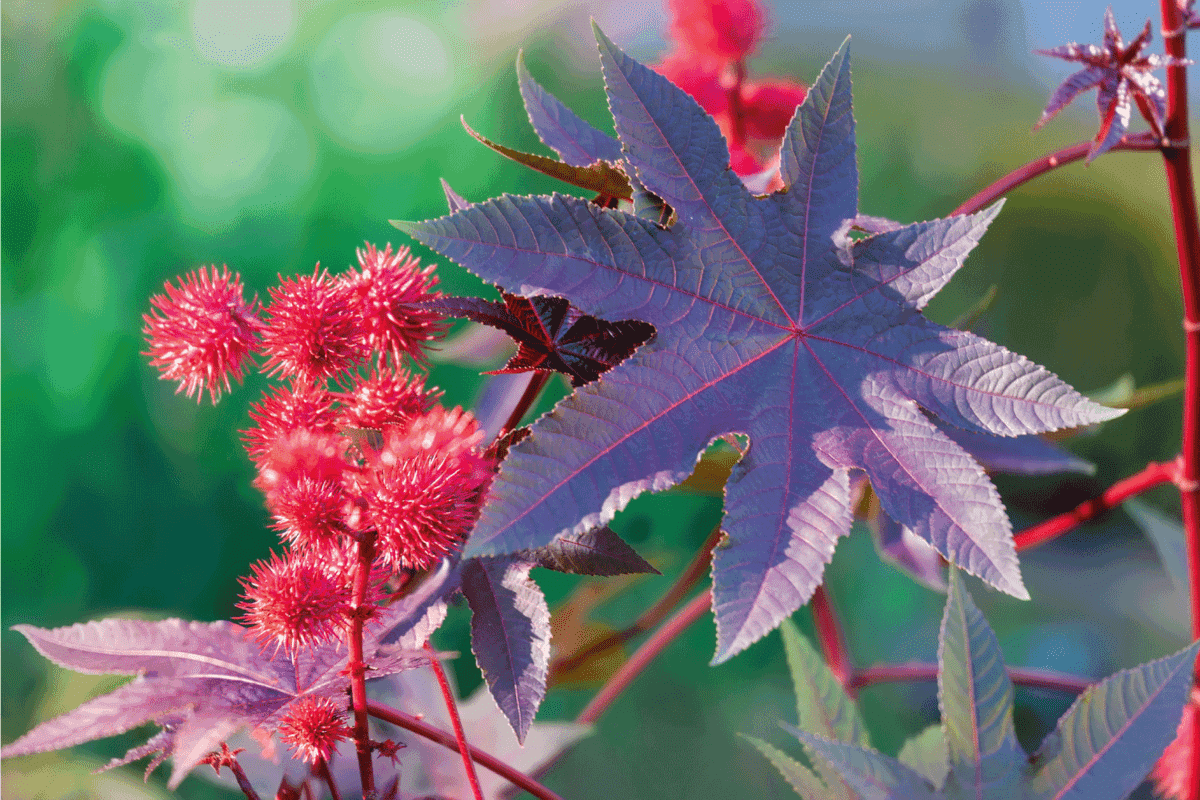
This plant can give your landscape a tropical look with its large star-shaped leaves and prickly fruits. Castor Bean is easy to grow, and the growth happens rather quickly. They prefer loamy soils and at least partial full sun throughout the day.
Although these plants are hardy to zones 9-12, they can be grown in other areas as annual plants. In the wild, these plants may become overbearing weeds. However, maintained in your garden, they can thrive in a controlled way.
2. Lilac
Lilac (Syringa) is a woody plant native to Europe and East Asia. They prefer to grow in USDA growing zones 3-7. If you want to see their full blooming potential, give this plant plenty of full sun. However, they survive in some shade.
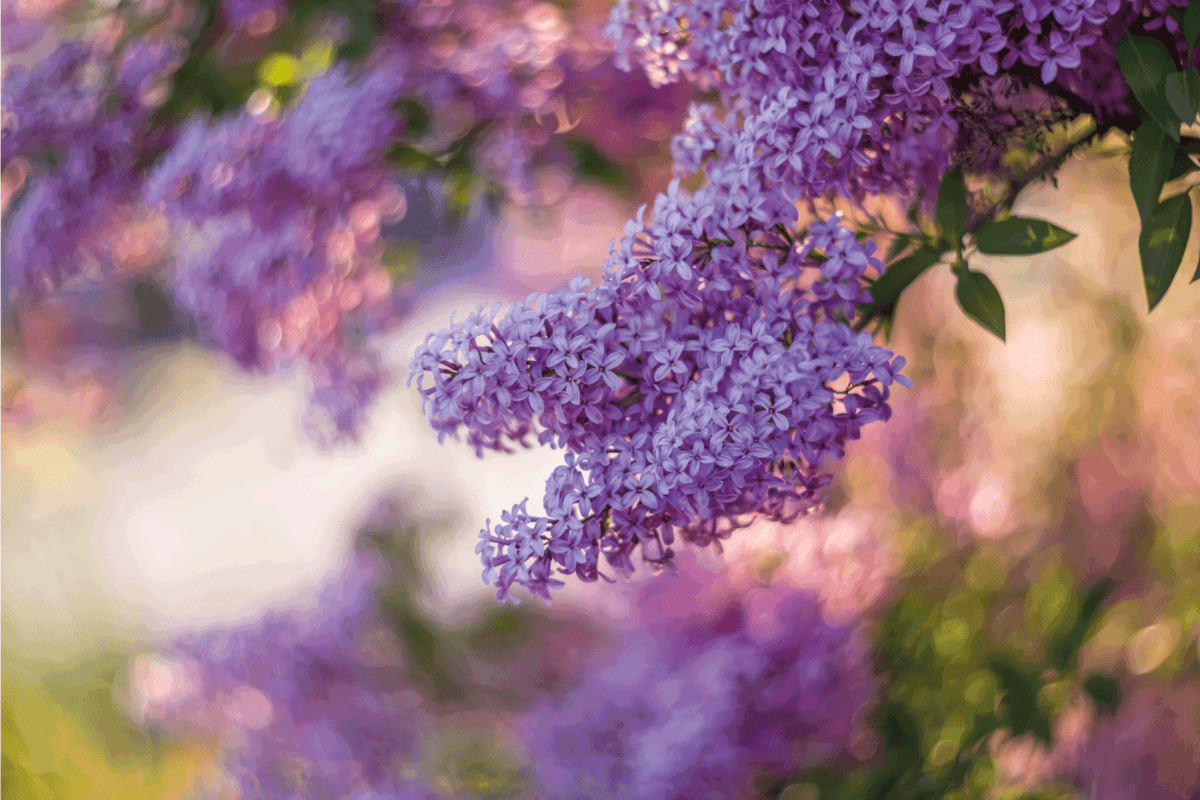
These small trees are popular for their fragrant, tubular, purple flowers. However, these flowers also come in white, yellow, and pink shades. Lilac likes moist soil with a slightly alkaline pH.
For poor-draining clay soil, add plenty of peat moss to improve the growing conditions. Lilac shrubs will survive in clay, wet soil but can have stunted blooms unless the soil becomes even with compost or peat moss.
3. Black-Eyed Susan
Brighten your garden with Black-Eyed Susan (Rudbeckia hirta). These are the perfect flower for your clay soils with basal leaves and sunflower-like heads. Sometimes called "gloriosa daisies," these flowers are hardy to zones 3-9 and come in a range of heights.
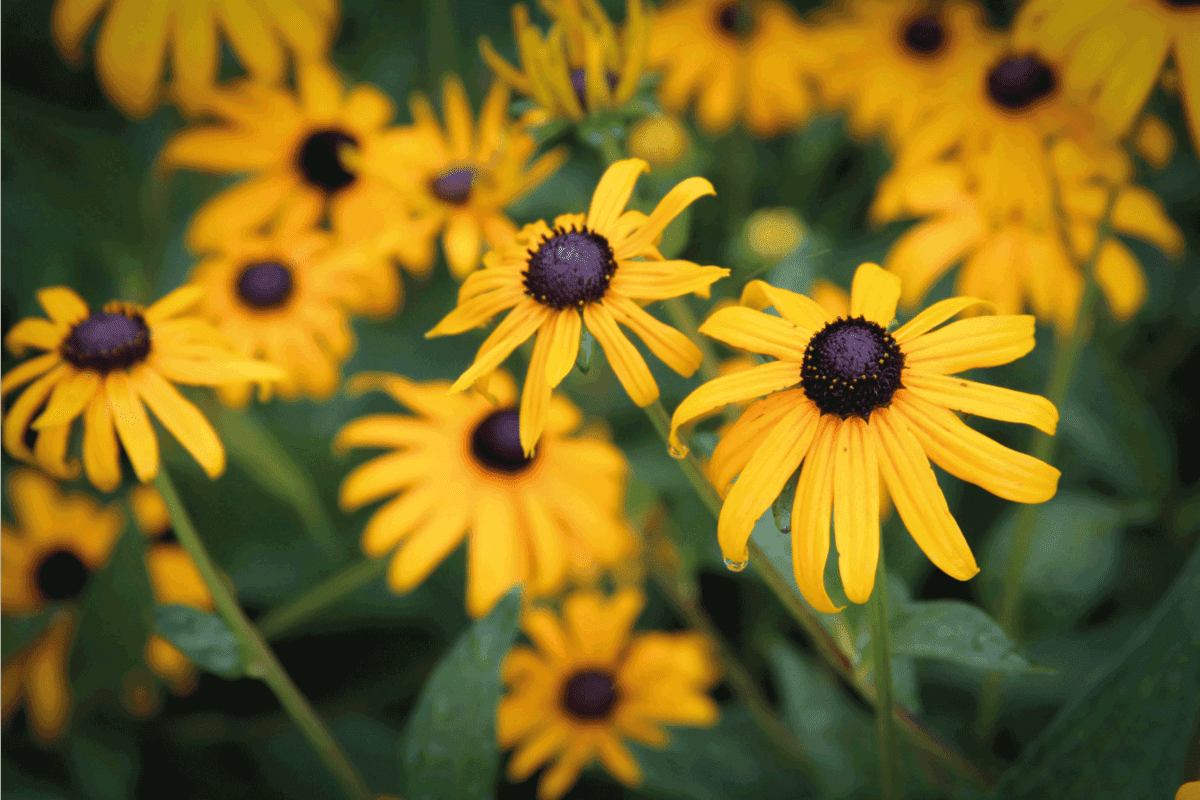
This wildflower enjoys moist soils but can survive in tough conditions. If you cut back the blooms after they flower, you will get to enjoy a second, smaller bloom.
Known as the Maryland state flower, these beauties reseed themselves. You can enjoy season after season of these plants after planting just once. Furthermore, they are a great nectar source for many butterflies and bees.
4. Petunia
Petunias (Petunia exserta) is an annual flowering plant that originated in South America. They range in colors as each species of Petunia can be mixed with another, creating a hybrid.
You will see Petunias in shades of white, blue, purple, and even black. Some species appear striped or spotted. Known as heavy feeders, this plant needs regular fertilizing to ensure an entire season of blooms.
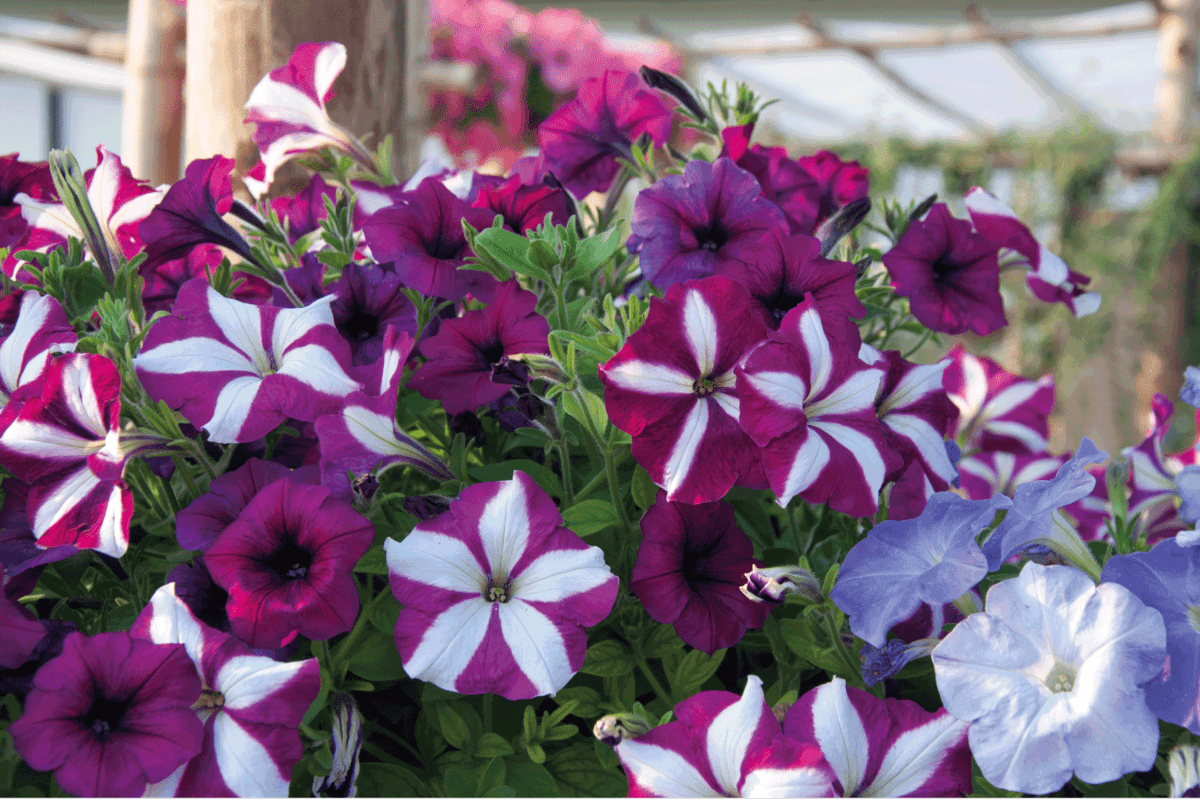
These flowers are perennials in zones 9-11 but can be grown as annuals in all other zones. Ground cover Petunias enjoy plenty of water and full sun to allow for as many blooms as possible.
Read more on our blog post, "Where To Buy Petunia Seeds (Top 30 Online Stores)."
5. Beautyberry
Purple Beautyberry (Callicarpa dichotoma) is a shrub or small tree native to many parts of the world, including Southeast Asia, Australia, North and South America.
This shrub includes clusters of white or pink flowers and produces a small, metallic berry. This berry can make wine or jam but makes entire meals for many birds and other animals in the winter months.
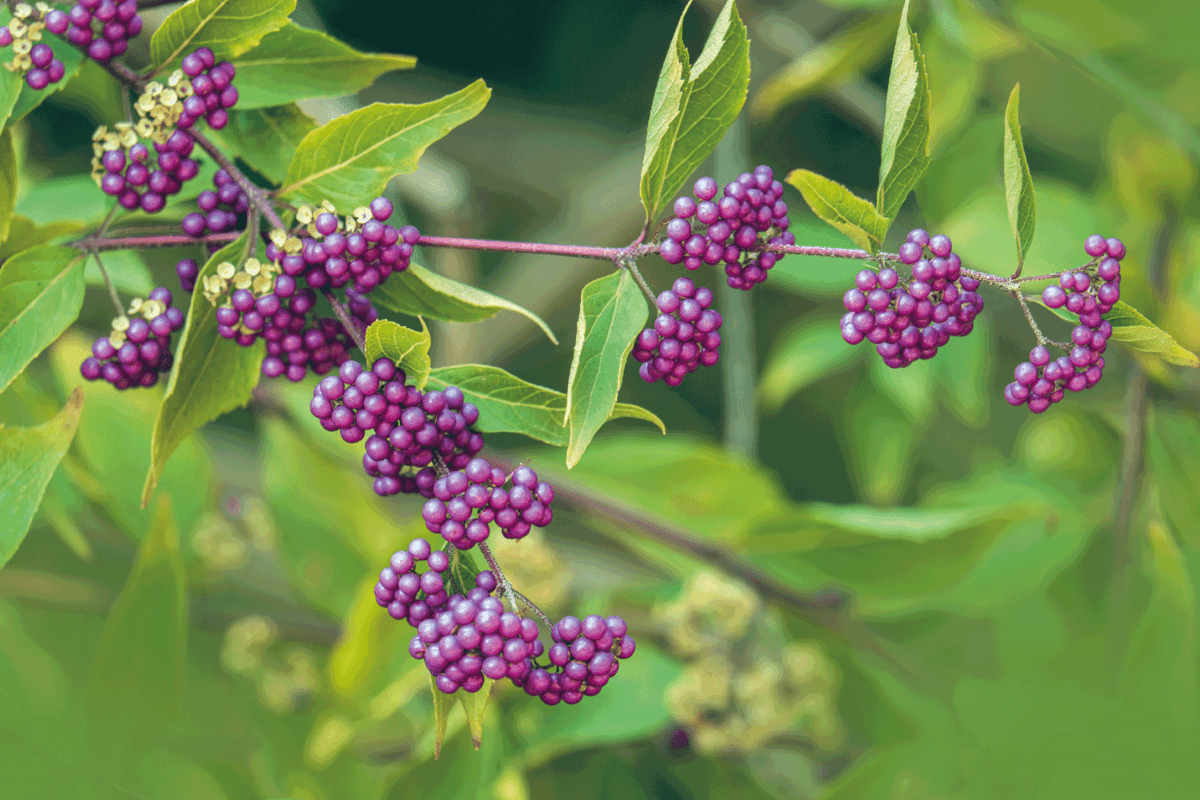
To work with your poorly drained clay soil, add some compost to the hole when planting this shrub. Allow for light shade and stay up with pruning in the late Winter or early Spring.
6. Blackberry Lilly
Also known as the Leopard Lilly, Blackberry Lilly (Iris domestica) is a perennial herb. They have green leaves in the form of a fan and orange, red-spotted flowers that bloom in the Summer.
This plant can thrive in various soils but prefers fertile, loamy soils. Enjoy taller plants with more water, and deadhead consistently to extend blooming times.
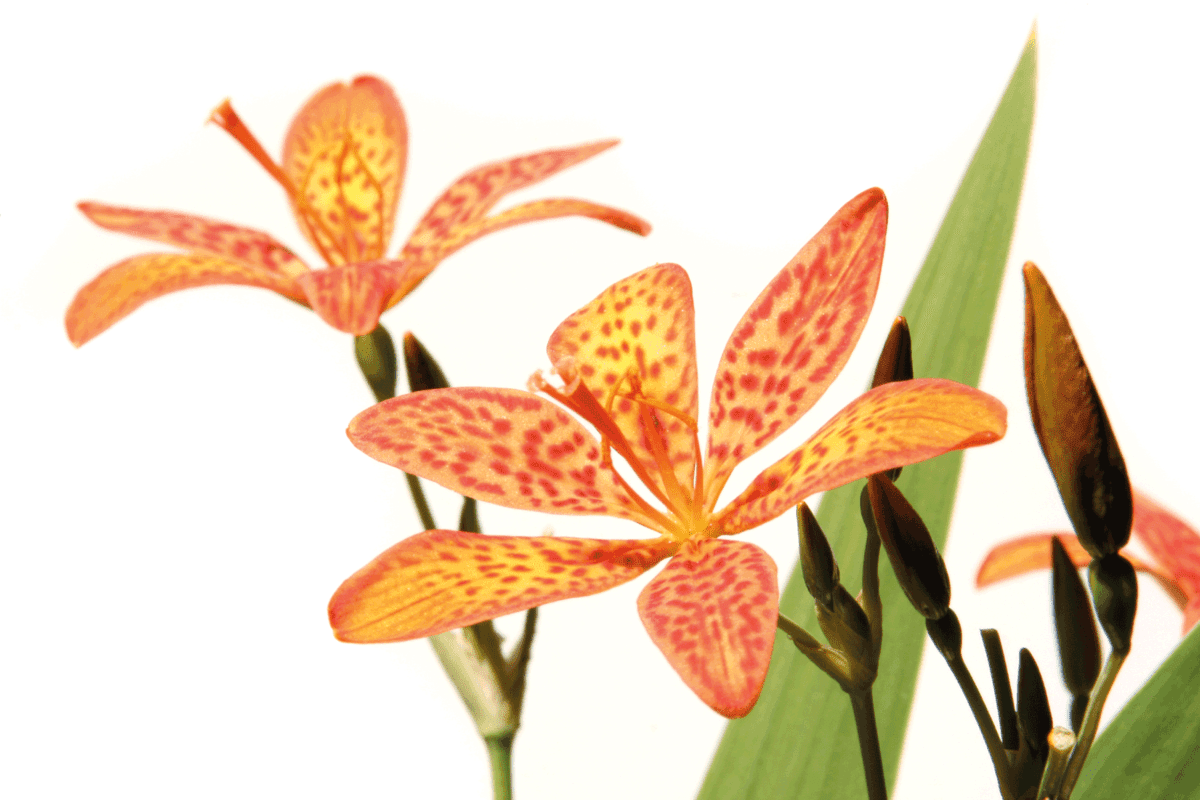
Blackberry Lilly is hardy to zones 5-10 and can be planted at any point, as long as the ground is not frozen. This is a low-maintenance plant that gives another level to your landscape with its rather tall flowers.
7. Redtwig Dogwood
Redtwig Dogwood (Cornus sericea) has many names, including the red osier, red bush, creek dogwood, and red-rood. Both the branches and twigs are dark red, and the leaves are dark green that change come Fall.
This plant prefers poorly drained soils. Wetland is home to these shrubs, and they can tolerate intense flooding. The upkeep for this plant includes pruning to remove old stems.
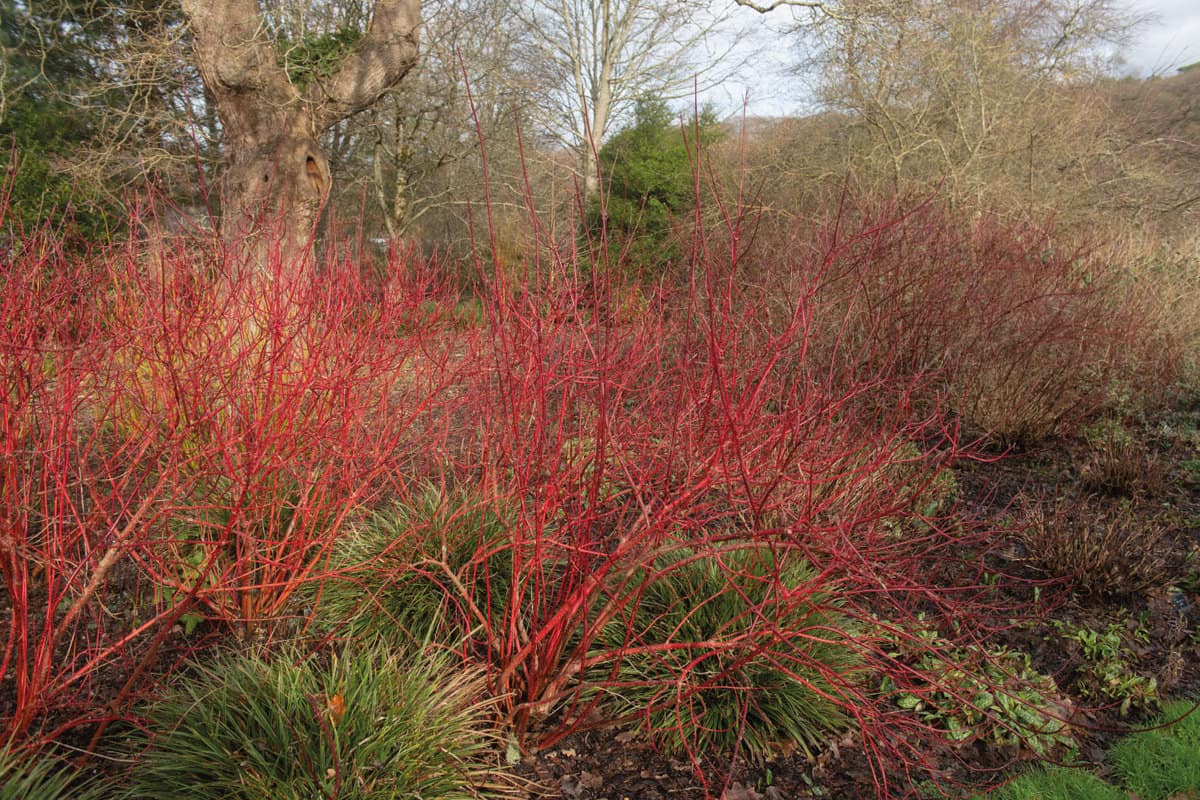
Redtwig Dogwood grows in zones 2-9. This is the perfect plant to give your landscape bright color in the winter months. To quickly renew Redtwig Dogwood, you can cut back the entire shrub, leaving stems about 9 inches (ca. 23 cm).
There will be an empty spot in the landscape until the bush starts regrowing. However, the growth will come back fuller and thicker than before.
8. Perennial Hibiscus
Hibiscus (Hibiscus rosa-sinesis) is also known as Rose Mallow. They are popular for their enormous pink flowers that come back every year. The leaves range from bright green to darker purples, some with white stripes.
Rose Mallow enjoys moist soils and plenty of sun. Fertilize these plants just once a year and cut them back in late winter or early Spring. This plant enjoys acidic soil, and adding peat moss to your clay soil is ideal.
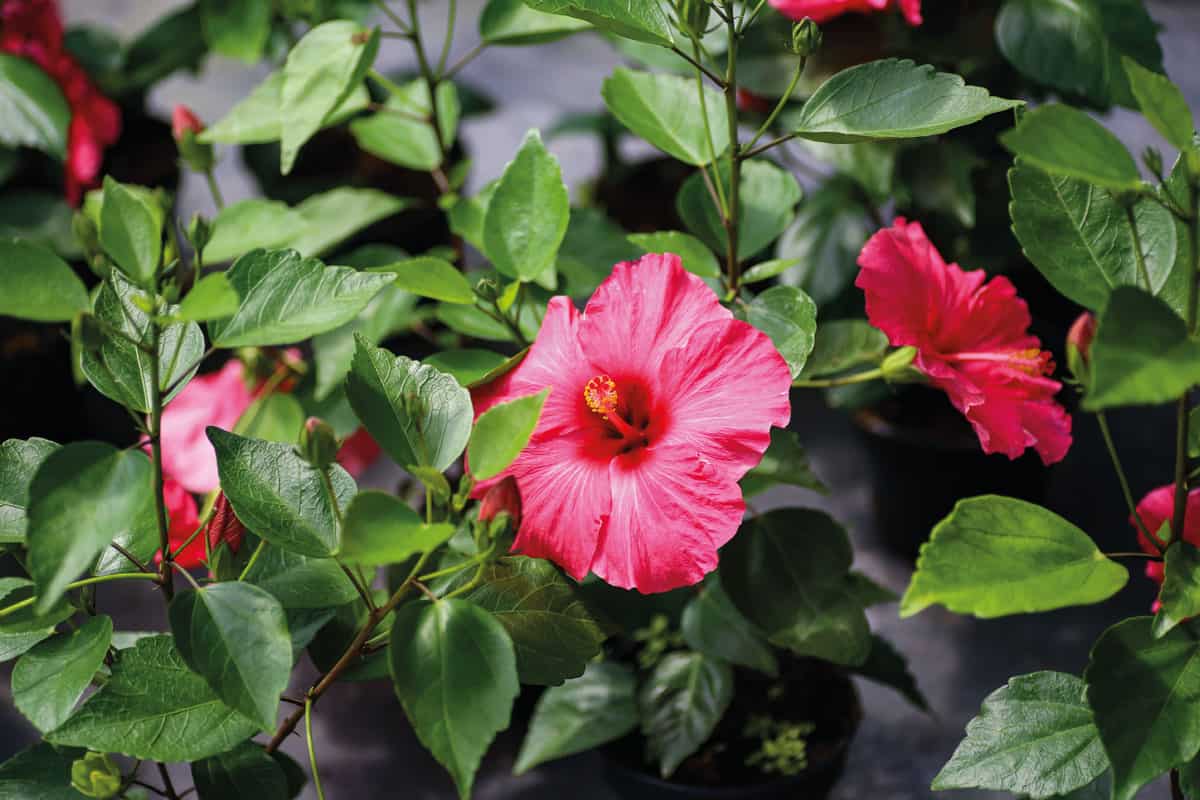
Hardy to zones 4-9, Perennial Hibiscus survives the winter and reliably comes back up to bloom the following season. However, other species of Hibiscus, such as tropical Hibiscus, needs warmer weather.
Read more on our blog post, "30 Tall Thin Plants For Landscaping Your Garden Or Backyard".
9. Creeping Jenny
This evergreen perennial spreads quickly, hence the name Creeping Jenny (Lysimachia nummularia). This plant has rounded leaves and rounded small yellow flowers in a cup shape.
Creeping Jenny or Moneywort is hardy to zones USDA zones 2-10. It is excellent for covering hard-to-grow areas in any landscape, making it popular for poorly drained clay soils.
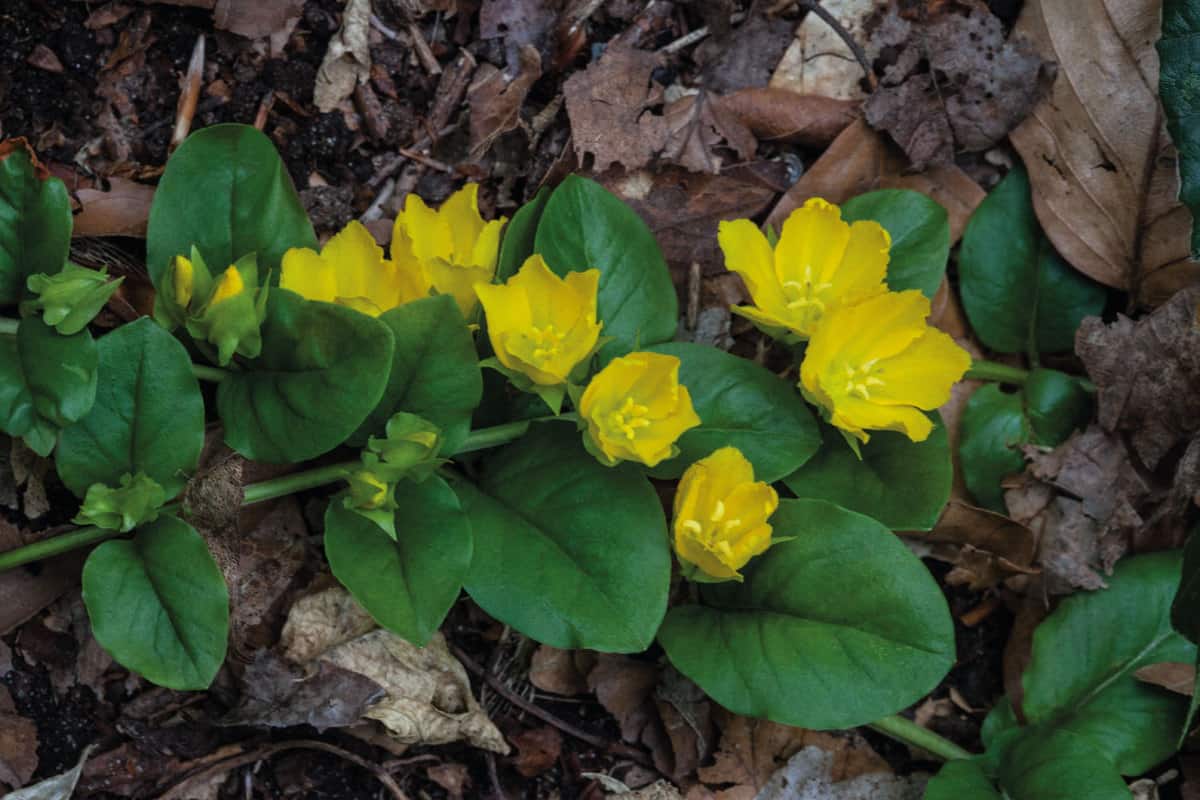
This plant loves moist soils and can often be found along rivers. Give your Creeping Jenny a trim before winter comes, and watch it come back to life come Spring.
Due to the invasive nature of this plant, it is best to check with your local rules on what you can and cannot plant. In some areas, Creeping Jenny is a restricted plant.
Read more on our blog post, "10 Ground Cover Plants That Bloom All Summer".
10. Sweet Flag
Sweet Flag (Acorus calamus), also known as Muskrat root, is a wetland flowering plant. This plant flowers for about a month, consisting of basal leaves with crimped edges. The flowers are small with green or yellow coloring on a spike-like structure.
This plant is hardy to zones 6-9 and is happiest in moist to wet soils. Enjoy the low maintenance this plant needs. You can plant them even in standing water, give them plenty of sunlight, and this plant is happy.
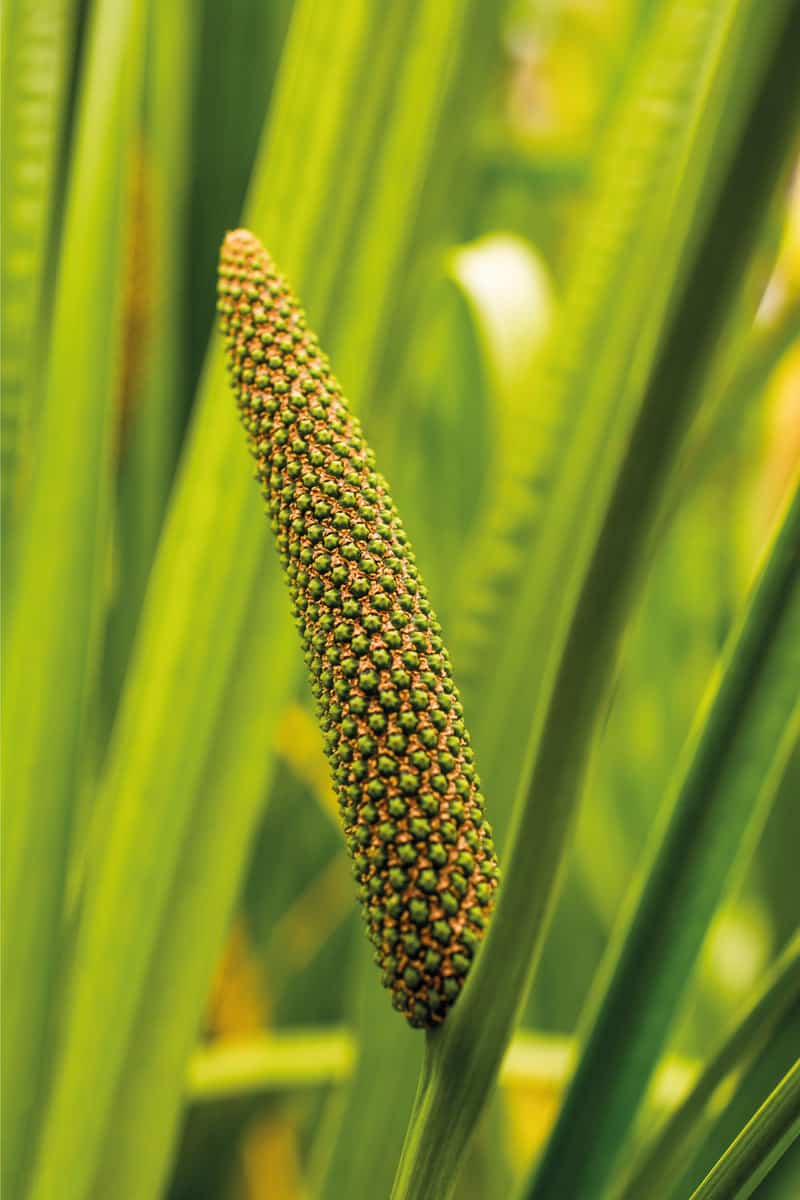
Sweet Flag is slow-growing, so you don't have to worry so much about pruning or cutting it back before winter. One drawback being this plant is toxic to both humans and animals.
11. Royal Fern
Royal Fern (Osmunda spectabilis) is native to marshy woods or bogs throughout Canada and Argentina. They can add an exotic touch to your landscape with their bright green, twice cut leaves.
You can plant these ferns in moist or wet areas with plenty of shade. They do have a preference for acidic soil but can survive in other soils. The most important part of their care is getting enough water.
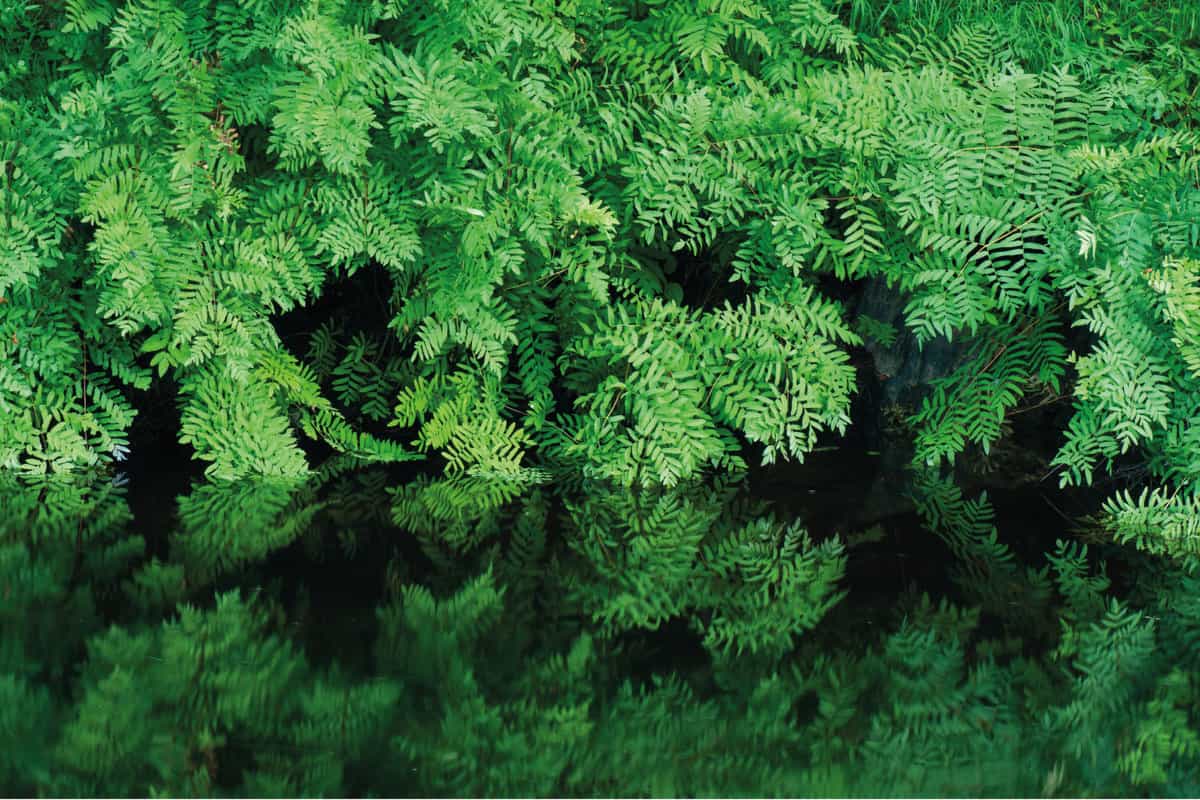
Royal Ferns are hardy to zones 3-9 and do not require additional fertilization in most cases. Additionally, you can prune browning leaves before winter to promote growth in the following season.
Concluding Thoughts
These plants are all great options for clay, poorly drained soil. Which plant you choose depends on the look you are after within your landscape and how much effort you want to put into maintaining these plants. We hope you found an option that you like within this article.
Looking for more plant inspiration? Have a look through our blog post, "37 Outdoor Plants That Need Little Water".
